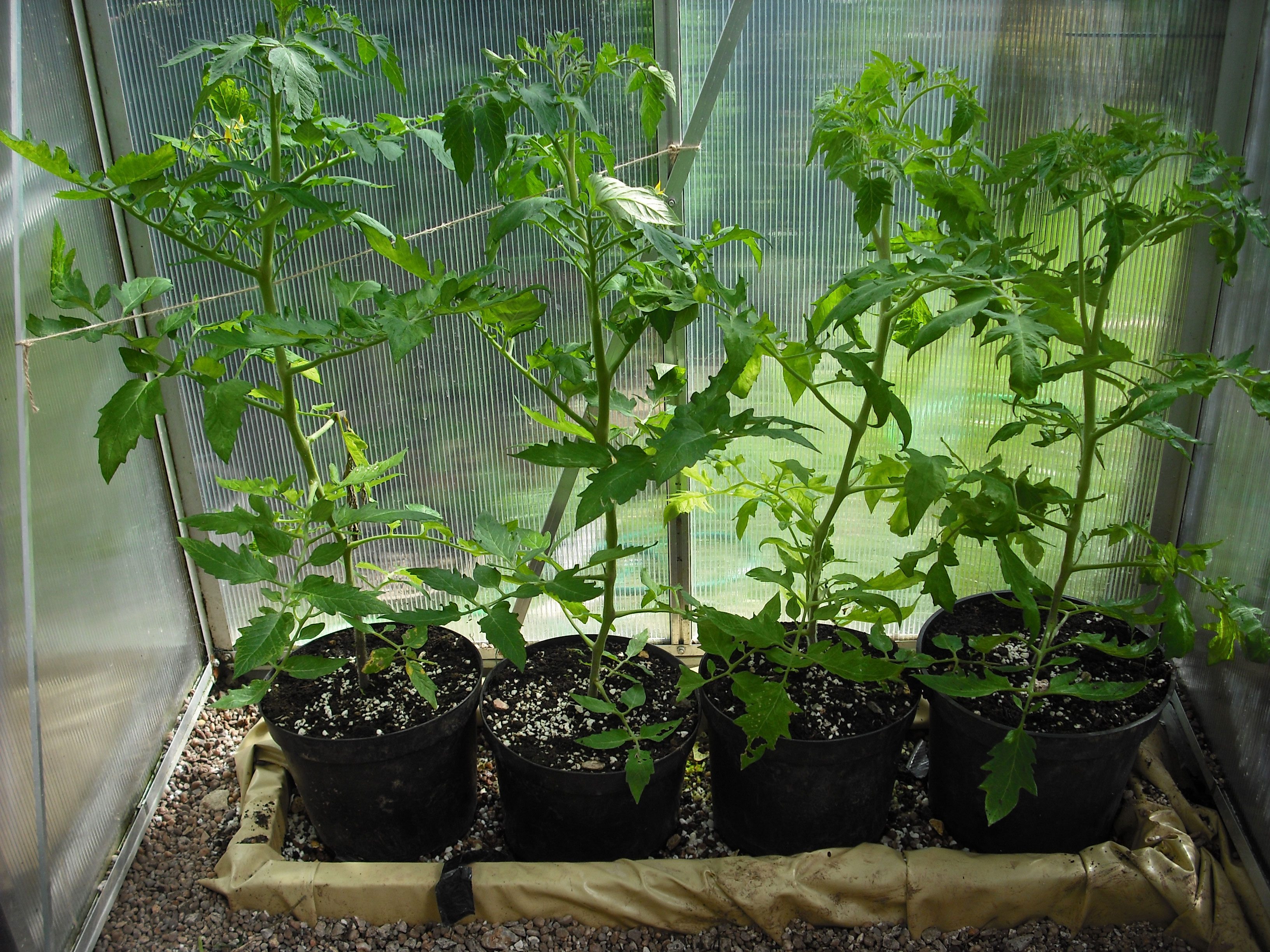Ring Culture Of Tomatoes - Learn About Tomato Ring Culture Growing

Love tomatoes and enjoy growing them but you seem to have no end of trouble with pests and disease? A method for growing tomatoes, which will prevent root diseases and soil borne pests, is called tomato ring culture growing. What is tomato ring culture and how is ring culture of tomatoes used? Read on for more information.
How to Use Ring Culture for Tomatoes
Tomato plant ring culture allows roots access to a large volume of water and nutrients with being grown in a soil medium. Simply put, the tomato plant is grown in a bottomless ring or pot that is partially submerged in a water retaining base. Because tomato plants have strong root systems with an ample tap root, tomato ring culture growing is an ideal method for cultivation in the greenhouse. Ring culture isn't necessarily ideal for other types of plants; however, chili and sweet peppers, chrysanthemums, and eggplant may all benefit from this type of cultivation. Ring culture pots can be purchased, or any 9 to 10 inch (22.5 to 25 cm.) container with the bottom cut out and a capacity of 14 pounds (6.4 kg.) can be used. The aggregate can be gravel, hydroleca, or perlite. You can dig a trench and fill it with polythene and washed gravel, builders ballast and sand (80:20 mix) or build a retaining wall on a solid floor to hold 4-6 inches (10-15 cm.) of the aggregate. Very simply, a gravel filled tray can suffice for tomato ring culture growing or even a 70-liter (18.5 gallons) bag of compost or a grow bag upended.
Tomato Plants Ring Culture Growing
Prepare the bed a couple of weeks prior to planting the tomatoes to allow the aggregate to warm. Clean the growing area to prevent contamination from preceding crops or infected soils. If digging a trench, the depth should be no more than 10 inches (25 cm.) and no less than 6 inches (15 cm.). A lining of polythene pierced with drainage holes will keep the soil from contaminating the aggregate mix. Additionally at this time, consider how you want to stake the plants. The commonly used bamboo poles will work if you have a dirt floor or if you have a poured floor or other permanent floor, the tomatoes can be tied to supports bolted to the roof glazing bars. Or, another method is to drop strings suspended from the roof down into the bottomless pots prior to planting. Then, plant the tomato seedlings in their medium along with the string, whereupon the tomato will be compelled to grow up and against that support. For ring culture of tomatoes, fill the bottomless pots with growing medium and transplant the young tomatoes. Leave the pots on the greenhouse floor, not the aggregate, until the plants are established and roots are beginning to peep out of the bottom of the pot. At this time, place them on the gravel, spaced just as you would for indoor crops. Keep the gravel moist and water the tomato plants growing in ring culture two to three times a week. Feed the plants as soon as the first fruit sets with a liquid tomato fertilizer twice a week or so and continue to grow just as you would any other tomato. Once the final tomato has been harvested, remove the plant, easing the roots from the gravel and toss away. The aggregate can be reused for successive crops once it has been cleaned and disinfected for years to come.
Gardening tips, videos, info and more delivered right to your inbox!
Sign up for the Gardening Know How newsletter today and receive a free copy of our e-book "How to Grow Delicious Tomatoes".

Amy Grant has been gardening for 30 years and writing for 15. A professional chef and caterer, Amy's area of expertise is culinary gardening.
-
 Grow ‘Karl Rosenfield’ Peony Plants For The Ultimate Frilly Border Beauties And Cut Flowers
Grow ‘Karl Rosenfield’ Peony Plants For The Ultimate Frilly Border Beauties And Cut FlowersFor frilly double magenta peony petals infused with a heady fragrance, grow ‘Karl Rosenfield’ peony plants. Here’s how to cultivate the ultimate plushy blooms
By Tonya Barnett
-
 10 Common Composting Problems That Can Spoil Your Garden Gold – Plus Easy Fixes
10 Common Composting Problems That Can Spoil Your Garden Gold – Plus Easy FixesLearn how to troubleshoot common composting issues before they ruin your stash – from bad smells and bugs to materials not breaking down as they should.
By Susan Albert